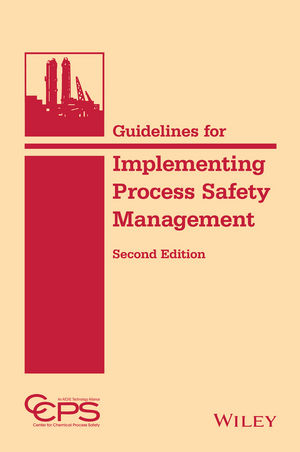The major energy sources in the U.S. are petroleum (oil), natural gas, coal, nuclear and renewable energy. Oil provides 93 percent of the energy used for transportation, but only about 1 percent of the energy used to generate electric power. With approximately 5 percent of the world’s population, the U.S. is a powerful user of petroleum, responsible for roughly 25 percent of annual global oil consumption, and has a per-person daily consumption rate of more than double the rates of the European Union, according to 2008 estimates.
Power of regulations
However, the U.S. consumption of energy by way of petroleum involves another source of power: regulation. In addition to the policies put forth from U.S. Department of Energy (DOE) regarding energy and the safety in handling nuclear material, much attention has been put toward one main safety regulation: Process Safety Management (PSM). PSM is enforced in the U.S. and is regulated by OSHA through the Process Safety Management (PSM) Standard, 29 CFR 1910.119, titled Process Safety Management of Highly Hazardous Chemicals. It applies to companies, such as those in the energy industry, that handle any of more than 130 specific toxic and reactive chemicals, including specific quantities of flammable liquids and gases in a covered process.
PSM provides the energy industry with a consistent and effective approach to assure a high- integrity operation in most sectors; however, PSM is not a regulation that applies directly to oil or gas well drilling or servicing operations. With that in mind, PSM practices are still applicable to organizations in the energy industry that perform activities with oil and gas to help reduce costly accidents and incidents.
The standard is divided into 14 necessary elements that are interlinked and interdependent, and the basic objective is to prevent an unwanted release of highly hazardous chemicals by effectively managing the people, technology and equipment that make up the process. PSM targets highly hazardous chemicals that have the potential to cause a catastrophic incident, and the energy industry uses such chemicals.
Process Hazard Analysis
Of the 14 elements, one of the most important components of Process Safety Management in the generation of energy is the Process Hazard Analysis. A process hazard analysis is defined by OSHA as a thorough, orderly, systematic approach for identifying, evaluating and controlling the hazards of processes involving highly hazardous chemicals. During this analysis, a qualified team evaluates the various parts of a covered process; equipment, instrumentation, utilities, human actions and external forces are all closely looked at so that potential hazards can be identified and analyzed. Using this information, an action plan is developed that provides recommendations for preventing a catastrophic incident.
The process hazard analysis is key to the safety effort because it provides information to help management and operators improve safety and make better decisions to reduce risk. This analysis is especially important with petroleum and oil and gas activities in the energy industry; hazardous materials are being handled all of the time, and the need for strict planning and tracking is high. It aims to help the energy industry sectors to better understand and implement the principles of PSM, with a view to further improve its safety performance.
OSHA recommends one of the following methods (or their equivalent) for conducting the analysis:
- Checklist
- What-if/checklist
- Hazard and Operability Study (HAZOP)
- Failure Modes and Effects Analysis (FMEA)
- Fault Tree Analysis
In addition, OSHA emphasizes that the process hazard analysis effort should be performed using a team knowledgeable in both the process and the hazard analysis techniques. A process should also be established that addresses the findings and four recommendations from the hazard analysis effort, including a schedule on when actions must be completed. The regulations require that the hazard analysis be updated at least every five years.
Maximize safety
When the PHA is approached as a regulatory-required “Check the box” task, process safety incidents continue to occur and investigations will find that the PHA did not identify the cause or consequence.
To be effective, the PHA needs to be thorough. The bottom line is that you cannot engineer protective designs and safeguards for consequences you have not identified; utilizing the PHA as more than just checking off a box can help to remedy costly accidents and incidents.
According to Aon Energy Risk Engineering, to maximize your company’s safety, your PHA should be able to do the following:
- Systematically identify causes, potential consequences and current safeguards
- Uncover potential low likelihood, high hazardous consequences so safeguards can be identified and evaluated
- Ensure your corporate procedures are followed throughout the study
- Provide high-quality documentation that meets both regulatory and your corporate requirements
Learning how to improve
Though Process Safety Management is not a regulation that applies directly to oil or gas well drilling or servicing operations, it is highly encouraged to implement these procedures into an energy company’s safety program. Such regulations are increasing efforts to reduce the risk of catastrophic events such as the release of toxic, reactive, or explosive materials that can damage the environment or plant assets, as well as cause injury or death to employees and the general public.
The development of a Process Safety Management program, with emphasis on a strong Process Hazard Analysis, is designed to improve operational safety by evolving to meet the challenges of the energy industry’s safety landscape for oil and gas companies. The merit of operating companies who adhere to PSM regulations goes beyond the prevention of accidents to increase productivity, quality improvement, waste, and cost reduction — it saves lives.
Sources:
“Aon Energy Risk Engineering - Process Hazards Analysis and Layer of Protections Analysis.” Aon. Aon Plc, n.d. Web. 14 May 2013.
Bridges, William, and Revonda Tew. “Human Factors Elements Missing from Process Safety Management (PSM).” Process Improvement Institute, Inc., 2012. Web. 13 May 2013.
“High Level Framework for Process Safety Management.” Energy Institute. Energy Institute, n.d. Web. 13 May 2013.
“Process Safety.” Energy Institute. Energy Institute, n.d. Web. 14 May 2013.
“U.S. Energy Facts — Energy Explained.” Energy Information Administration. U.S. Department of Energy, Oct. 2012. Web. 14 May 2013.
“The World Factbook.” CIA. Central Intelligence Agency, n.d. Web. 14 May 2013.




